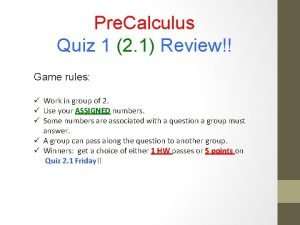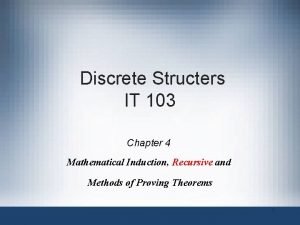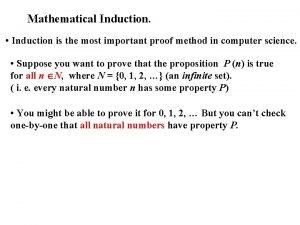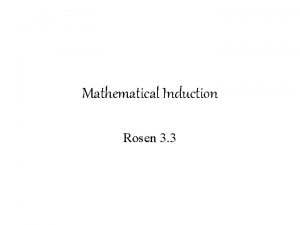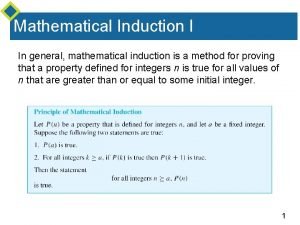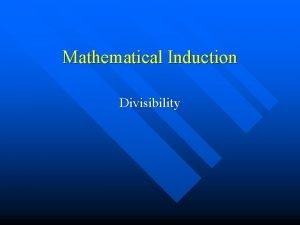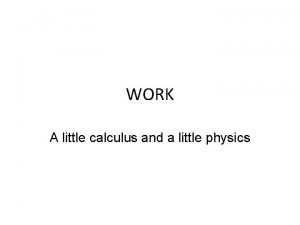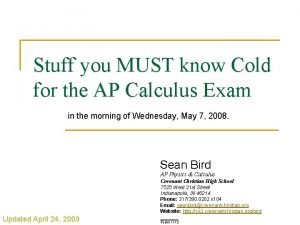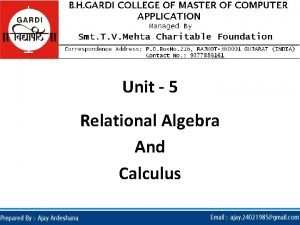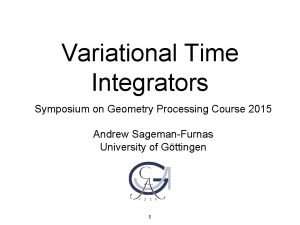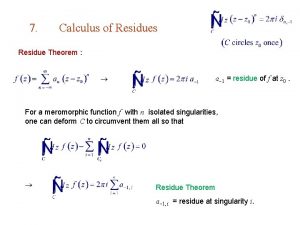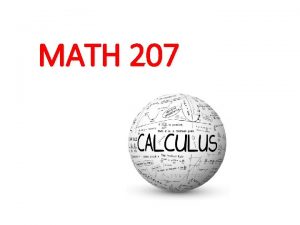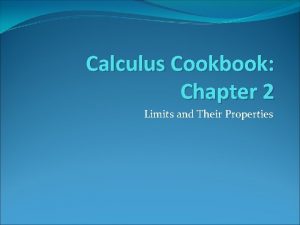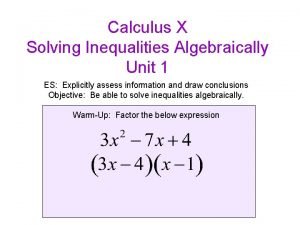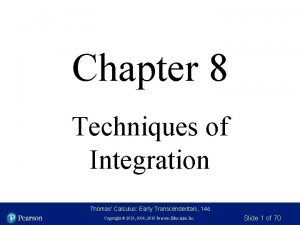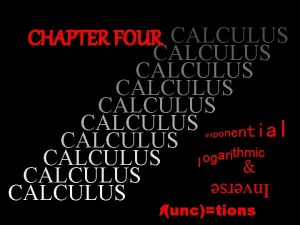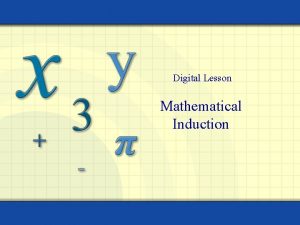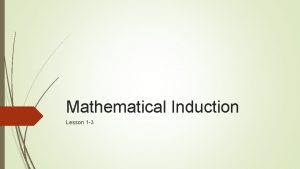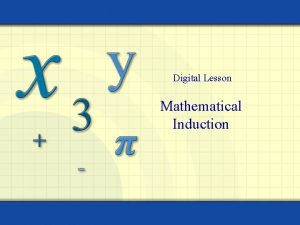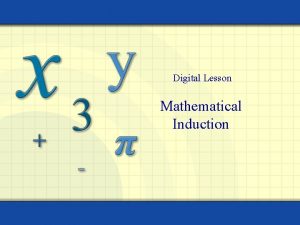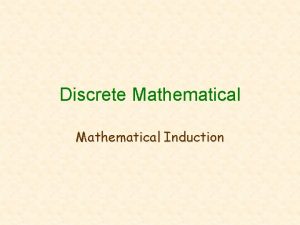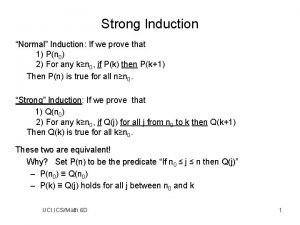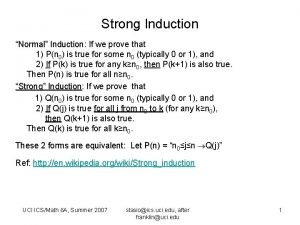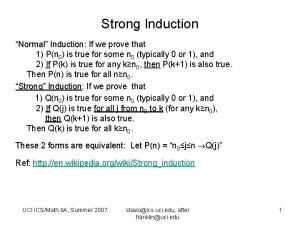Mathematical Induction Pre Calculus 8 4 Mathematical Induction





























- Slides: 29

Mathematical Induction Pre. Calculus 8 -4

Mathematical Induction

Is this true for all possible sums of odd numbers? Mathematical Induction

• Start by making a conjecture But, we still don’t know this to be true for ALL possible numbers Mathematical Induction

• Start by making a conjecture There an INFINITE number of possibilities to check. We need a process to prove this for ALL numbers Mathematical Induction

Mathematical Induction - Method of proving a given property true for a set of numbers by proving it true for 1 and then true for an arbitrary positive integer by assuming the property true for all previous positive integers Induction Step – A logical statement that leads from one true statement to the next Mathematical Induction

• Instead of proving an infinite number of statements to be true, we prove that if one is true, the next one must be true also Mathematical Induction

Mathematical Induction

Mathematical Induction

Mathematical Induction

Mathematical Induction

Mathematical Induction

• Practice – Use induction to show 2 + 6 + 10 +. . . + (4 n-2) = 2 n 2 Mathematical Induction

• Practice – Use induction to show 1 + 2 + 3 +. . . + n = ½ n(n + 1) Mathematical Induction

• Practice – Use induction to show 3 + 6 + 9 +. . . + 3 n = ½ 3 n(n + 1) Mathematical Induction

• Practice – Use induction to show 5 + 7 + 9 + 11 +. . . + (3 + 2 n) = n(n + 4) Mathematical Induction

Mathematical Induction

Mathematical Induction

Mathematical Induction

Your book also has formulas for the fourth and fifth power Mathematical Induction

Mathematical Induction

Mathematical Induction

Mathematical Induction

Mathematical Induction

Mathematical Induction

As fate would have it, I could tile the board regardless of where the missing square is. In fact I can do it for an 8 x 8 chessboard, a 16 x 16 chessboard, etc. As long as there is one square missing. In fact, I can even prove that I can tile any 2 n x 2 n chessboard, with one square missing with my friend angular triomino. Go ahead, and you try to prove it, work in groups Mathematical Induction

Base Case: Trivial Inductive Step: Divide the 2 n+1 x 2 n+1 checkerboard into four equal pieces as shown, then temporarily remove three squares Mathematical Induction

As we have four 2 n x 2 n boards with one square missing in each, we can tile what is left by induction, and then we can tile the removed squares with on angular triomino Mathematical Induction

Homework • Page 592 • 7 -15 odd, 19, 23, 25 Mathematical Induction
 Pre calculus unit 1 review
Pre calculus unit 1 review Honors precalculus chapter 1 test
Honors precalculus chapter 1 test Pre ap calculus quiz 1
Pre ap calculus quiz 1 Principle of mathematical induction
Principle of mathematical induction 9-5 geometric series
9-5 geometric series Induction proofs
Induction proofs Strong induction
Strong induction Mathematical induction
Mathematical induction Geometric sequence closed form
Geometric sequence closed form Eecs 203
Eecs 203 Mathematical induction
Mathematical induction Principle of mathematical induction
Principle of mathematical induction Mathematical induction divisibility
Mathematical induction divisibility Mathematical induction
Mathematical induction Znacznik pre /pre jest stosowany w celu wyświetlenia
Znacznik pre /pre jest stosowany w celu wyświetlenia Elements of mathematical economics
Elements of mathematical economics A little calculus
A little calculus Area under the curve integration
Area under the curve integration Theory of mineralization
Theory of mineralization Stuff you must know cold
Stuff you must know cold Tuple and domain calculus are collectively known as
Tuple and domain calculus are collectively known as Calculus bc worksheet 2 on polar
Calculus bc worksheet 2 on polar Calculus topics
Calculus topics Variational calculus
Variational calculus Calculus of residues
Calculus of residues Rram calculus
Rram calculus Brightspace ccc
Brightspace ccc Calculus cookbook
Calculus cookbook How to solve an inequality algebraically
How to solve an inequality algebraically Calculus
Calculus


